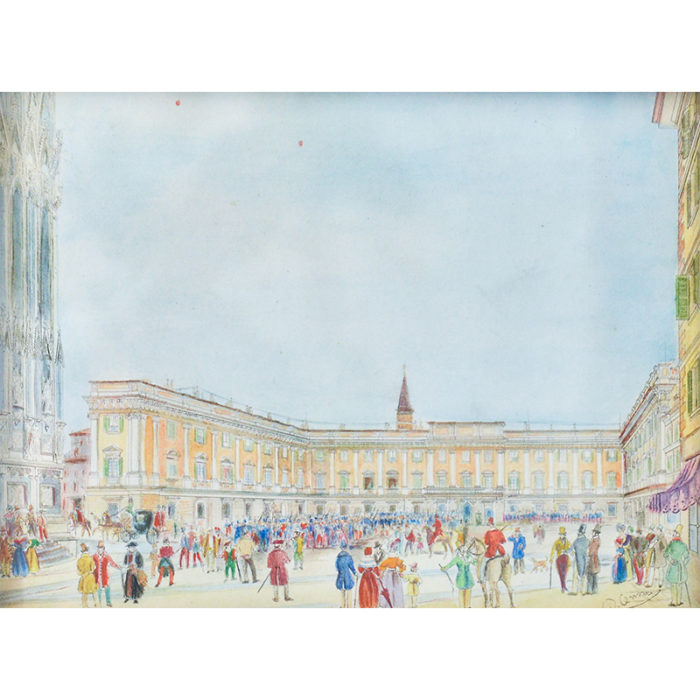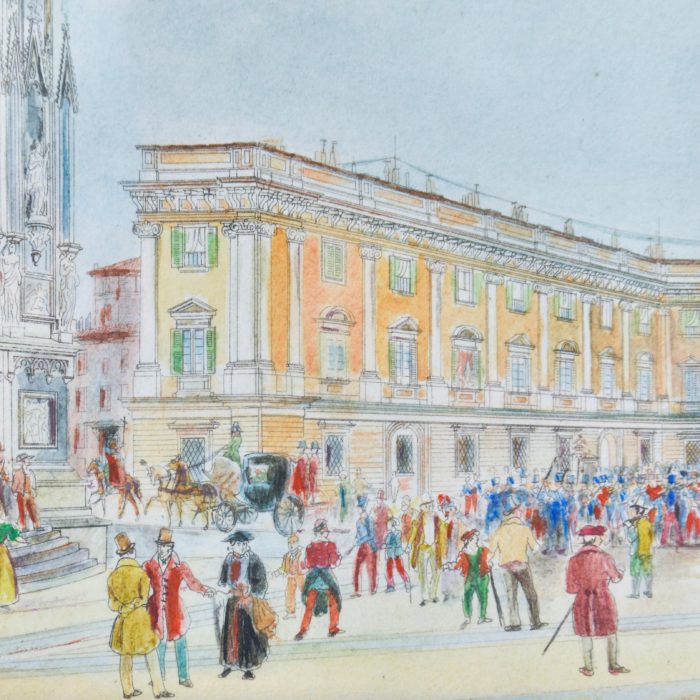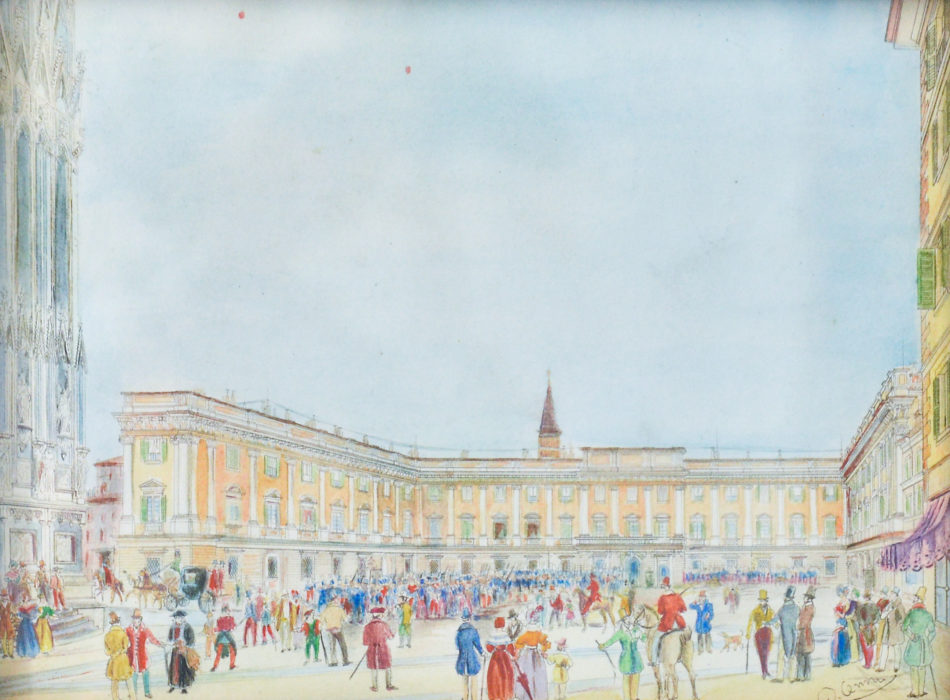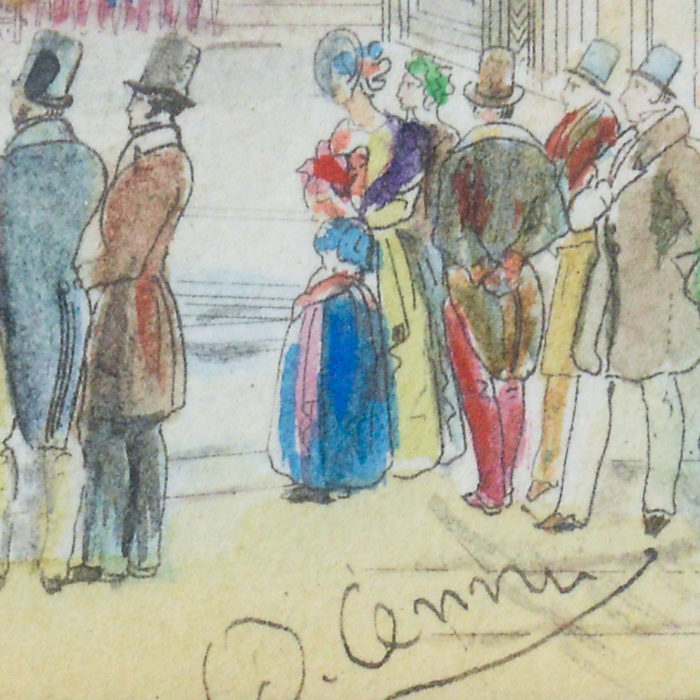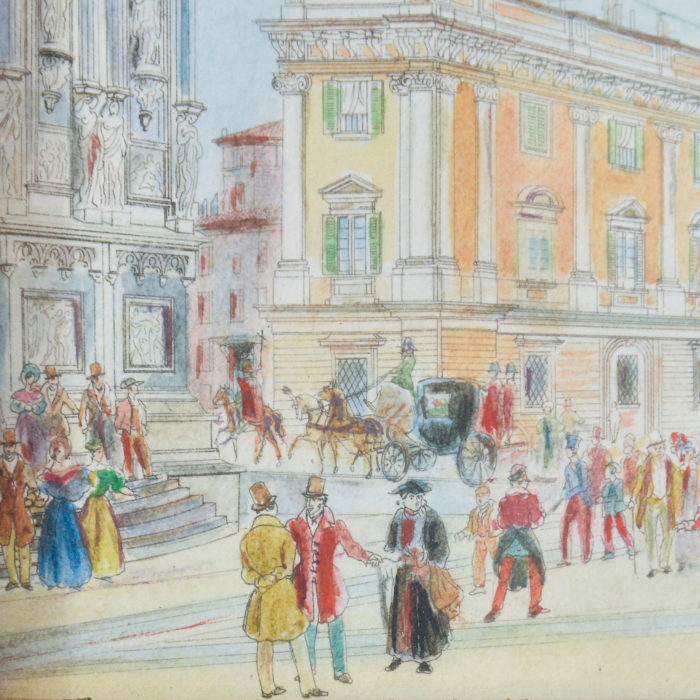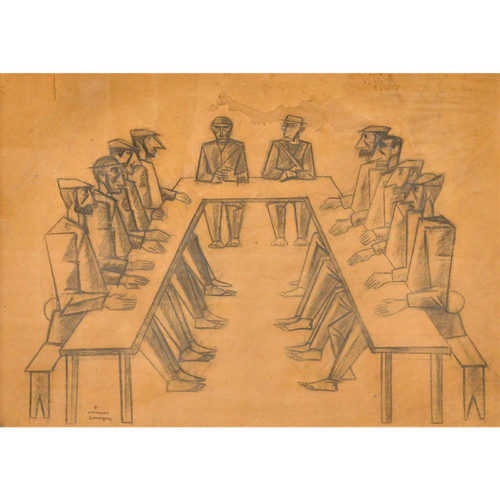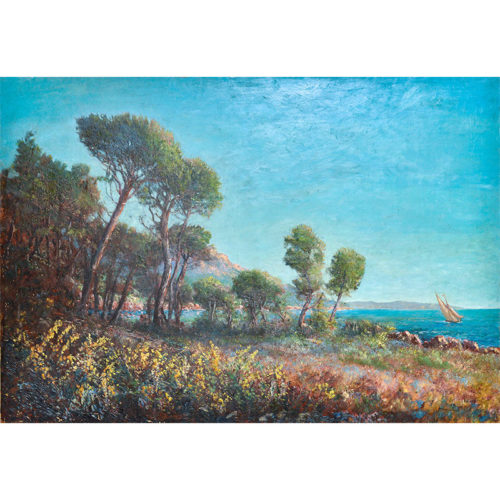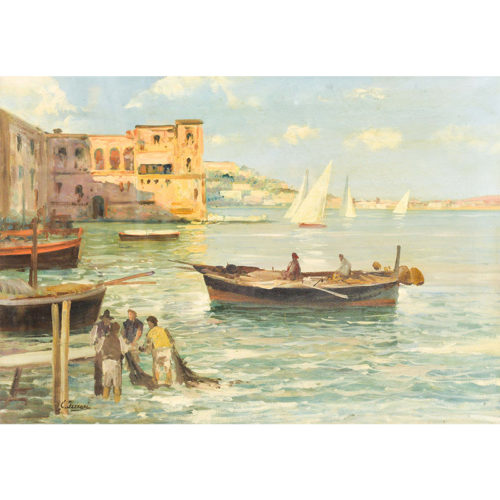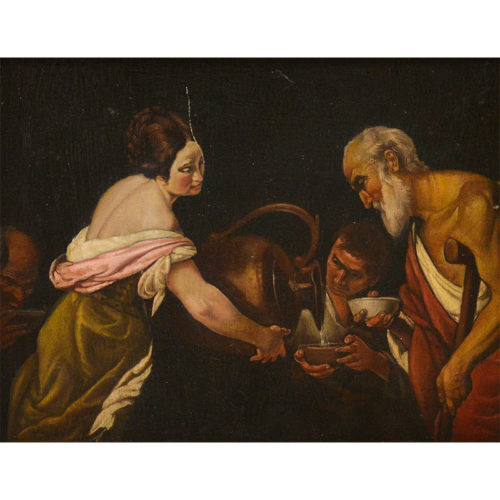Watercolor drawing by Quinto Cenni (1845-1917) dating back to the end of the 19th century.
Born in Imola on 20 March 1845, from an early age he developed an innate passion for drawing which he developed by portraying military figurines observed on the dusty roads of the country, then traveled by pontifical and Austrian soldiers, then by Piedmontese. His spirit of observation captured every distinctive element of the uniform and when he didn’t see them personally, he made them describe them and then draw them. The untimely death of his father seemed to interrupt his school career at the Academy of Fine Arts in Bologna. A municipal subsidy first came to his aid then nothing more until 1867. After the death of his mother, who had remained his only supporter, he then decided to move to Milan. Here he obtained various positions as illustrator of magazines, continuing in the portraiture of events and men. From 1887 he became director of the “Italian Military Illustration” collecting great affirmations in Italy and abroad. His son Italo followed in his footsteps but with less success. Quinto Cenni died in 1917 in Carate Brianza. The artistic production of Quinto Cenni is today preserved in part by public institutions and in part by numerous private collectors scattered all over the world. 288 watercolors are conserved in the National Museum of Castél S. Angelo in Rome, of which 238 were donated by the Prime Minister Mussolini and 50 by the heirs of Cenni. At the Museo del Risorgimento in Milan 133 watercolors are preserved on the volunteers of the Risorgimento. Other smaller groups are located in the Pinacoteca civica di Imola. In addition to the artist’s private archive, the Historical Office of the Army General Staff has (300 plates of his code) a collection of 2,500 sheets divided into various volumes, where Quinto and his son Italo after him collected notes and designs on uniforms, weapons and armies from all over the world and all eras. Recently, 50 watercolors by Quinto Cenni on the Duchy of Parma at the time of Maria Luigia, of which the existence was unknown, appeared on display in the Museum of New York.
Period: Late 19th century
Measurements: In frame H 36 x L 42 x P 6 / Paper H 18 x L 23 cm
